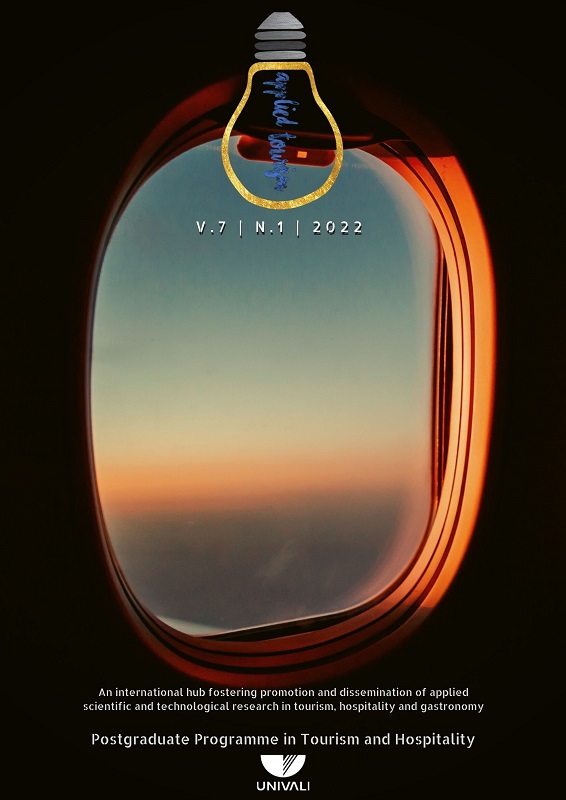

The evaluation of a city, as a brand, is essential for professionals who manage the marketing and communication strategies aimed at attracting potential visitors to the location. This study investigates the applicability of an instrument for evaluating a tourist destination as a brand. The study was applied in the city of Porto, Portugal, elected best European destination in 2012, 2014 and 2017 by the International Collegiate Programming Contest (ICPC, 2020). In particular, the level of awareness, image and quality perceived by visitors to the city was assessed. The relationship between these dimensions and tourist satisfaction was also verified. Using a quantitative approach, the instrument, initially created by Konecnik and Ruzzier (2006), was adapted and applied to a convenience sample made up of young Portuguese adults who were visiting or had visited the city of Porto. The results showed that the four dimensions of the original scale had an acceptable reliability coefficient and provided relevant results about the city under study. In general, visitors expressed positive levels of "awareness", "image", "quality" and "satisfaction" in relation to the city of Porto. Variables from all three dimensions (awareness, image and quality) were detected that influenced the variables of satisfaction.
Â




Aaker, D. (1996). Measuring Brand Equity Across Products and Markets. California Management Review, 38 (3), 102-120.
Anholt, S. (2006) The Anholt – GMI city brand index: How the world see the world’s cities. Place Branding, 2 (1), 18-31.
Arandes, J. (2008). La imagen de marca de las ciudades. Provincia, 19 - enero-junio, 91-120.
Ashworth, G.; Kavaratzis, M. (2009). Beyond the logo: Brand management for cities. Brand Management, 16 (8), 520-531.
Azevedo, A.; Magalhães, D.; Pereira, J. (2010). City Marketing - Myplace in XXI. Porto: Vida Económica - Editorial, S.A.
Baloglu, S.; McCleary, K. (1999). A model of destination image formation. Annals of Tourism Research, 26 (4), 868-897.
Barros, J. (2008). A satisfação com a qualidade de serviços na fidelização dos destinos turísticos: aplicada a Cabo Verde. MSc thesis, Universidade do Porto, Porto, Portugal
Bigne, J.; Sánchez, M.; Sánchez, J. (2001). Tourism image, evaluation variables and after purchase behaviour: inter-relationship. Tourism Management, 22 (2001), 607-616.
Caldwell, N.; Freire, J. (2004). The difference between branding a country, a region and a city: Applying the Brand Box Model. Brand Management, 12 (1), 50-61.
Chen, C.; Tsai, D. (2007). How destination image and evaluation factors affect behavioral intentions? Tourism Management, 28, 1115-1122.
Chen, J.; Uysal, M. (2002). Market position analysis: A Hybrid Approach. Annals of Tourism Research, 29 (4), 987-1003.
Echtner, C.; Ritchie, J. (2003). The Meaning and Measurement of Destination Image. The Journal of Tourism Studies, 14 (1), 37-48.
Evanschitzky, H.; Baumgarth, C.; Hubbard, R.; Armstrong, S. (2007).Replication Research in Marketing Revisited: A Note on a Disturbing Trend. Journal of Business Research, 60 (4), 411-415.
Gallarza, M., Saura, I.; García, H. (2002). Destination image: Towards a Conceptual Framework. Annals of Tourism Research, 29 (1), 56-78.
Guerreiro, M. (2014) O Papel da Cultura na Gestão da Marca das Cidades. Caderno Profissional de Marketing - UNIMEP, 2(1), 1-11.
Hair, J.; Money, A.; Page, M.; Samouel, P. (2007). Research Methods for Business, West Sussex, England: John Wiley & Sons.
Huang, S.; Lin, L. (2017). Awareness Effects of the Tourism Slogans of Ten Destinations in Asia. Journal of China Tourism Research, 13(2):1-13.
Hubbard, R.; Armstrong, S. (1994). Replications and Extensions in Marketing – Rarely Published But Quite Contrary. International Journal of Research in Marketing, 11, 233-248.
Hunter, J. (2001). The desperate need for replications. Journal of Consumer Research, Jun 2001, 28 (1), 149-158.
ICPC (2020). Porto Best European Destination. Available in: https://icpc2019.up.pt/2018/09/20/news-2/index.html
Kim, H.; Lee, T. (2018). Brand Equity of a Tourist Destination. Sustainability, 10, 2-21.
Konecnik M.; Gartner, W. (2007). Customer-based brand equity for a destination. Annals of Tourism Research, 34 (2), 400-421.
Konecnik M.; Ruzzier, M. (2006). The Influence of Previous Visitation on Customer's Evaluation of a Tourism Destination. Managing Global Transition, 4(2), 145-165.
Pakerson, B.; Saunders, J. (2005). City branding: Can goods and services branding models be used to brand cities? Place Branding and Public Diplomacy, 1 (3), 242-264.
Paliaga, M.; Franjic, Z,; Strunje, Z. (2010). Methodology of valuation of cities' brands. Ekonomska istrazivanja, 23 (2), 102-111.
Pike, S. (2002). Destination image Analysis: A Review of 142 Papers from 1973-2000. Tourism Management, 23(5), 541-549.
Qu, H., Kim, L.; Im, H. (2011). A model of destination branding: Integrating the concepts pf the branding and destination image. Tourism Management, 32(3), 465-476.
Richards, G.; Morrill, W. (2020). Motivations of global Millennial travelers. Revista Brasileira de Pesquisa em Turismo, 14(1): 126-135.
Sameh, H.; El-Aziz, H.; Hefnawy, N. (2018). Building a successful city branding case study: Dubai. Journal of Al Azhar University Engineering Sector, 13(48), pp.1058-1065.
World Tourism Organization (2008), Youth Travel Matters – Understanding the Global Phenomenon of Youth Travel, Madrid: World Tourism Organization.




Copyright (c) 2024 Paulo Ribeiro Cardoso, Alberto Ortiz Diniz

Este trabalho está licenciado sob uma licença Creative Commons Attribution-ShareAlike 4.0 International License.






Uma plataforma internacional com a finalidade de promover e disseminar a pesquisa científica e tecnológica aplicada em turismo, hospitalidade e gastronomia.

